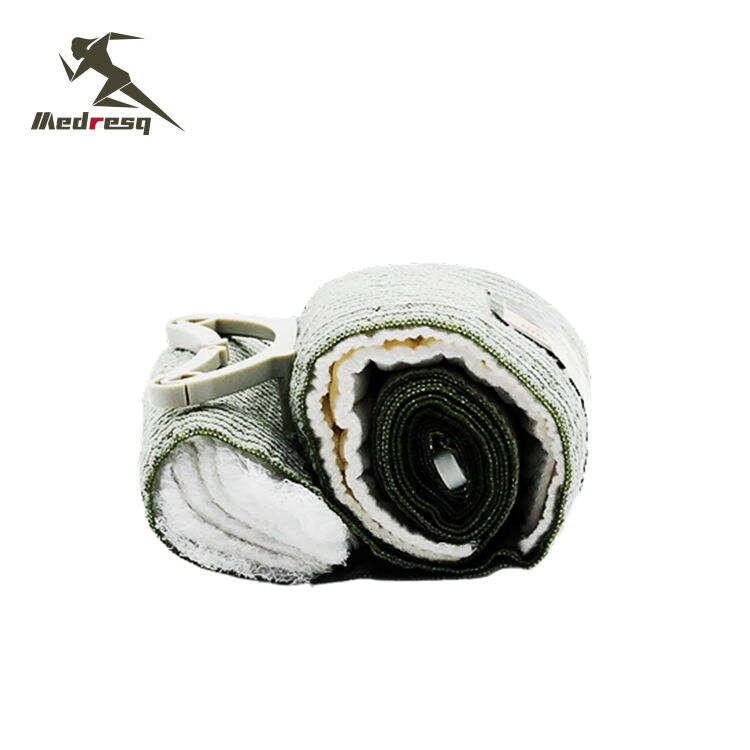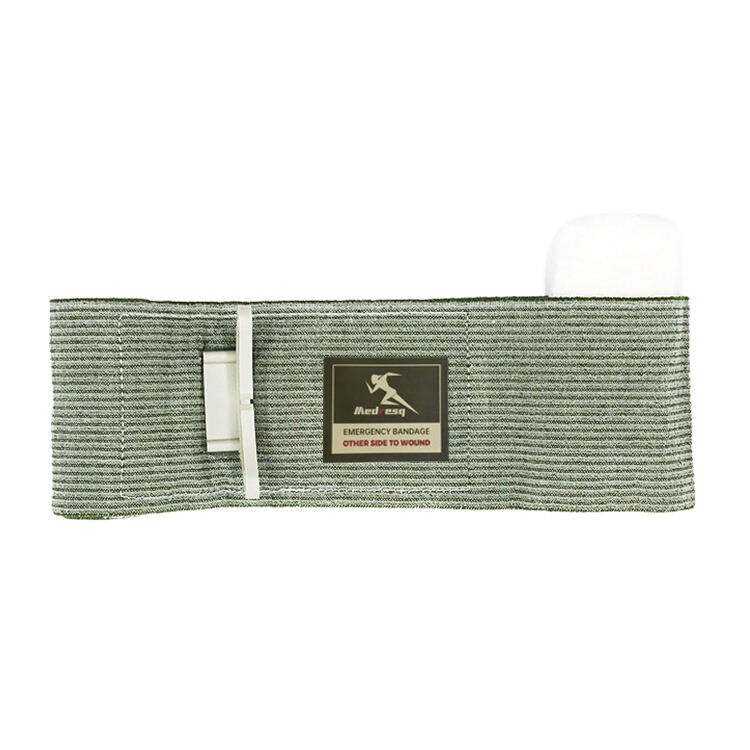Israeli Bandage Adhesion in Challenging Environmental Conditions
The efficiency of first aid provision is often reliant on the capabilities of medical provisions in suboptimal conditions. The Israeli Bandage is one of crucial pieces of equipment which are highly used due to their functionality in controlling the bleeding and securing an injury. The environmental factors that can be used, however, to test its efficiency are moisture, sweat and different skin types. In this paper, the researcher will investigate the mechanism by which this type of emergency dressing does not fall behind as it is needed the most.
Effectiveness on wet, sweaty, or hairy skin surfaces
One difficulty that is frequently experienced in an emergency is the use of a bandage on wet, sweaty, or hairy skin. These surfaces have the ability to make normal adhesive bandages much less adhesive and hence they either slide or are completely peeled off and this interferes with wound care.
The Israeli bandage has a good hard, pressure sensitive paste that is aggressive even on wet skin. The paste-like solution is aimed at forming a high-quality initial bond that will be able to repel the small amount of moisture or sweat on the skin. This enables the bandage to stick to the skin, which forms a seal which helps to prevent infections to the wound.
In the case of hairy skin, the adhesive power is adjusted so that there is sufficient adhesion without inflicting too much harm when the sticker is removed. The broad adhesive patches on the bandage have the effect of spreading the grip to a greater surface area and therefore, allows it to secure well even in the presence of body hair. This covers that the critical pressure bar and sterile dressing are placed in the right position to bleed stem.

How moisture impacts pressure bar function and dressing integrity
The Israeli Bandage is characterized by the use of the pressure bar which is meant to be twisted and attached to put direct pressure to a wound. The possibility of having too much moisture, though, might have implications to its functionality as well as its capacity to remain in position.
The pressure bar materials are usually waterproof so that they can still resist and hold on to the bandage piece despite being wet. The bar is attached to the bandage in such a manner that there is minimal slippage, hence is being able to be effectively twisted to cause the needed pressure without the overall dressing becoming loose.
Moreover, the general bandage constructions assist in protecting the wound and the surroundings of the wound. The non-adherent sterile pad and the fabric enclosing it are meant to handle moisture and it will remove any small amounts of moisture but retain a barrier that prevents the adhesive areas to stay as dry as possible. The combination of adhesive hold and mechanical service of the pressure bar in wet conditions is maintained with the help of this dual solution.
Textile backing and adhesive technologies used in high-grip models
In order to improve the work with a difficult environment, certain technologies are used in the creation of the bandage. The textile support is not just a straight woven cloth, but it is usually a durable, flexible, and tear-resistant fabric that gives the textile support without losing the mobility of the patient.
One of the distinctions is the adhesive. Most premium models have sophisticated adhesives which are very aggressive and waterproof and are made of acrylic or synthetic rubber. These are developed so that they cling fast to the skin even when there is humidity, sweat, or when there is light moisture. They offer a safe and stable storage that can be held over long durations of time which is essential in emergency evacuations or therapies.
The backing material is high performance and the adhesive is strong which means that the bandage puts consistent pressure, sticks firmly in place during patient mobility, and is able to work well in a very high variety of environmental conditions. Such a prudent combination of materials science and real-world design makes it a reliable resource of first responders all over the world.
 EN
EN
 FR
FR
 DE
DE
 IT
IT
 JA
JA
 KO
KO
 RU
RU
 ES
ES
 AR
AR
 BG
BG
 HR
HR
 DA
DA
 NL
NL
 FI
FI
 EL
EL
 NO
NO
 PL
PL
 PT
PT
 RO
RO
 SV
SV
 TL
TL
 ID
ID
 SR
SR
 UK
UK
 VI
VI
 SQ
SQ
 TH
TH
 TR
TR
 AF
AF
 MS
MS
 CY
CY
 IS
IS
 HY
HY
 AZ
AZ
 KA
KA
 MN
MN
 MY
MY
 KK
KK
 UZ
UZ
 CS
CS



